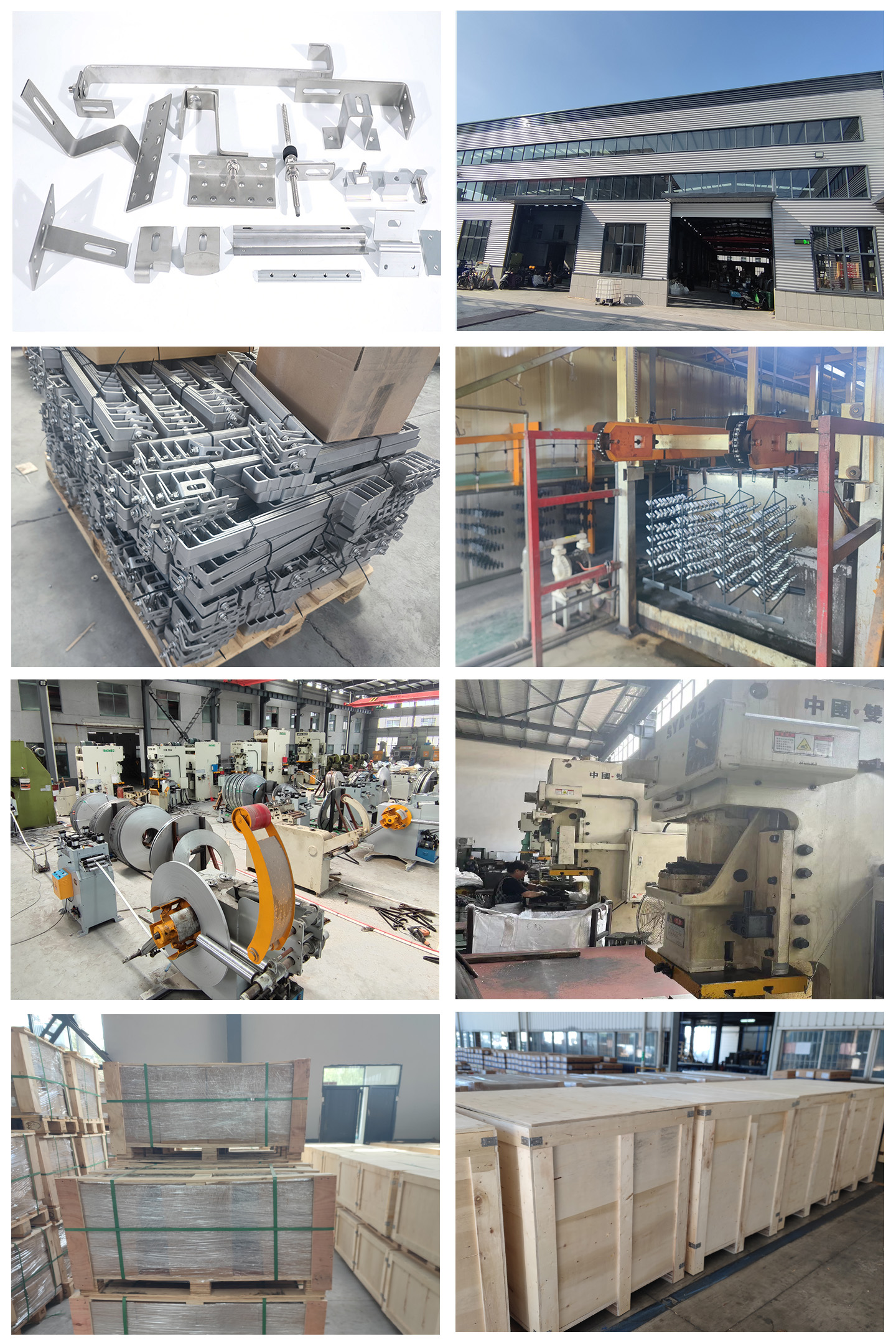- All
- Product Name
- Product Keyword
- Product Model
- Product Summary
- Product Description
- Multi Field Search
| Availability: | |
|---|---|
| Quantity: | |






HINA
HINA2024121701
Solar roof tilting bracket system has great flexibility in the design and planning of commercial and civil roof solar energy system.For parallel installation of ordinary frame solar panels on sloping roofs.Unique aluminum extrusion guide rail, tilt mounting parts, all kinds of card blocks, all kinds of roof hooks can be pre-installed, easy and fast installation, save your labor costs and installation time.The custom length eliminates the need for field welding and cutting to ensure high corrosion resistance, structural strength and aesthetics from the factory to the installation site.
1. Easy installation. The inclined mounting parts can be installed from any position of aluminum alloy extrusion guide rail, and pre-installed with the height of the clamping block and hook, thus minimizing the installation time and cost.
2. High durability: with the design concept of 20 years' service life and 10 years' quality assurance, all structural parts are high-strength stainless steel and anodized aluminum alloy to ensure the high durability of materials.
3. Withstand extreme weather. The grid solar energy inclined roof support system is designed by experienced engineers according to AS/NZS 1170 and other international common standards to withstand extreme weather conditions.The main stress components of the system are tested in various ways to ensure its structural bearing capacity.
4. Wide applicability. The grid solar energy inclined roof support system is applicable to all kinds of universal framed solar panels installed on all types of roofs in the existing market, ranging from small solar energy systems to large and even several megawatt systems.




Is it better to mount solar panels on the roof or ground?
There are advantages and disadvantages to installing solar panels on the roof and on the ground. Roof mounting system saves space and is closer to electrical equipment. Ground mounting system can flexibly adjust the angle and is relatively easy to maintain. The choice depends on site conditions, cost, aesthetic requirements, etc. If the roof space is suitable and the structure allows, roof mounting system may be better; if conditions are limited, ground mounting system is also a good choice.
How do you anchor solar panels to a roof?
1. Inspect roof, plan layout, calculate needed hooks/mounts. 2. Install hooks/mounts on roof, attach rails. 3. Mount panels, make electrical connections and ground, then inspect and test.
How to attach solar panels to a roof without drilling?
1.Use ballasted mounts for flat roofs. These rely on weights to hold the solar panels in place without penetrating the roof. 2. Consider adhesive - backed mounts if the roof material and panel weight allow. But make sure the adhesive is suitable for outdoor use and can bear the load. 3. Some solar panel systems come with clamp - on mounts that can attach to the edges of the roof structure or existing rails without the need for drilling.
Solar roof tilting bracket system has great flexibility in the design and planning of commercial and civil roof solar energy system.For parallel installation of ordinary frame solar panels on sloping roofs.Unique aluminum extrusion guide rail, tilt mounting parts, all kinds of card blocks, all kinds of roof hooks can be pre-installed, easy and fast installation, save your labor costs and installation time.The custom length eliminates the need for field welding and cutting to ensure high corrosion resistance, structural strength and aesthetics from the factory to the installation site.
1. Easy installation. The inclined mounting parts can be installed from any position of aluminum alloy extrusion guide rail, and pre-installed with the height of the clamping block and hook, thus minimizing the installation time and cost.
2. High durability: with the design concept of 20 years' service life and 10 years' quality assurance, all structural parts are high-strength stainless steel and anodized aluminum alloy to ensure the high durability of materials.
3. Withstand extreme weather. The grid solar energy inclined roof support system is designed by experienced engineers according to AS/NZS 1170 and other international common standards to withstand extreme weather conditions.The main stress components of the system are tested in various ways to ensure its structural bearing capacity.
4. Wide applicability. The grid solar energy inclined roof support system is applicable to all kinds of universal framed solar panels installed on all types of roofs in the existing market, ranging from small solar energy systems to large and even several megawatt systems.




Is it better to mount solar panels on the roof or ground?
There are advantages and disadvantages to installing solar panels on the roof and on the ground. Roof mounting system saves space and is closer to electrical equipment. Ground mounting system can flexibly adjust the angle and is relatively easy to maintain. The choice depends on site conditions, cost, aesthetic requirements, etc. If the roof space is suitable and the structure allows, roof mounting system may be better; if conditions are limited, ground mounting system is also a good choice.
How do you anchor solar panels to a roof?
1. Inspect roof, plan layout, calculate needed hooks/mounts. 2. Install hooks/mounts on roof, attach rails. 3. Mount panels, make electrical connections and ground, then inspect and test.
How to attach solar panels to a roof without drilling?
1.Use ballasted mounts for flat roofs. These rely on weights to hold the solar panels in place without penetrating the roof. 2. Consider adhesive - backed mounts if the roof material and panel weight allow. But make sure the adhesive is suitable for outdoor use and can bear the load. 3. Some solar panel systems come with clamp - on mounts that can attach to the edges of the roof structure or existing rails without the need for drilling.